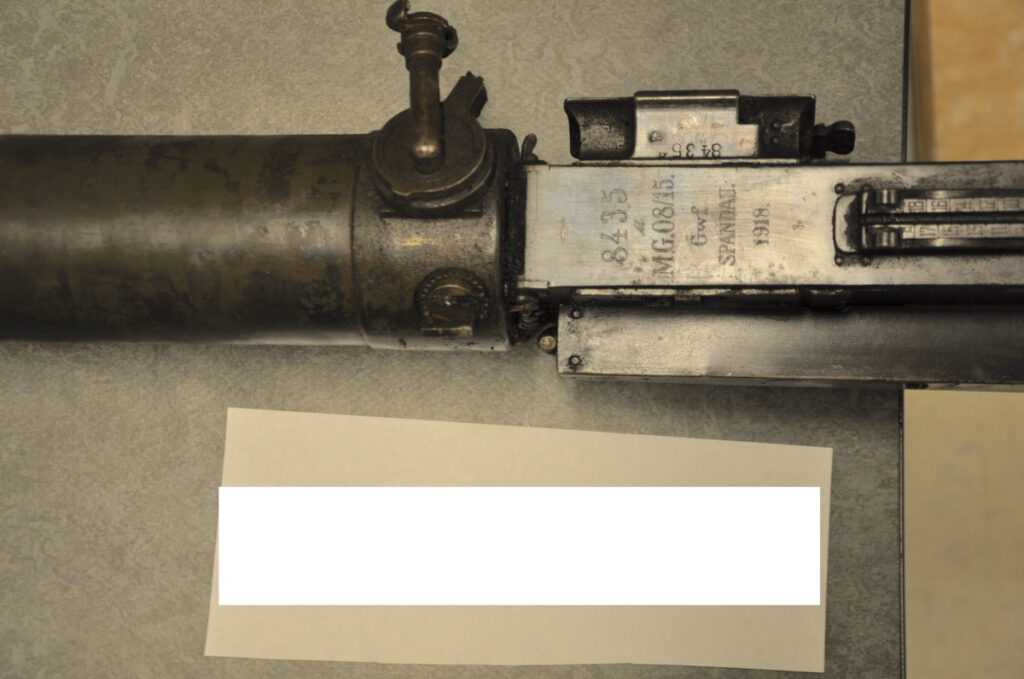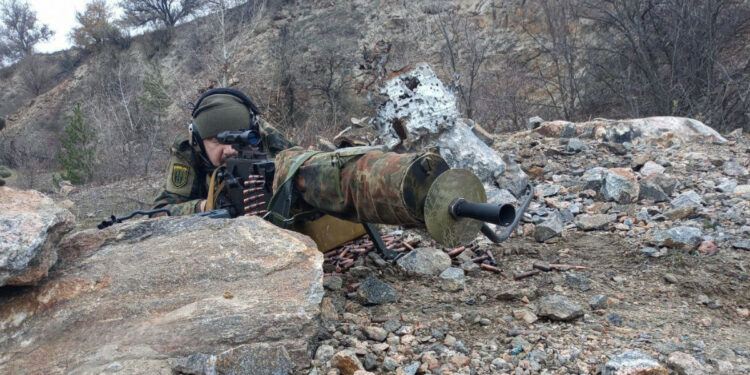Incredibly, right now, both sides in the Russia-Ukraine war are reportedly using 100-year-old M1910 Maxim machine guns in large numbers. As the battle lines become more static and massed infantry assaults are mounted, the sustained fire machine gun becomes an indispensable tool for holding ground. Sustained fire with a machine gun is only possible with water cooling. No matter how often you change the barrels on an air-cooled machine gun eventually enough heat will get in the receiver to expand the metal and jam the gun until it cools off. The Maxim is a water-cooled gun and, what’s more, it has the longest life of any machine gun used for continuous fire being the only machine gun that has fired 15 million rounds and still been able to keep firing. No other machine gun comes close.
As long as you keep water in the water jacket and keep the loaded belts coming, it will keep on working as steadily as a sewing machine, only requiring a new barrel every 15,000 rounds; a change that can easily be done in 15 seconds. If a part does break, the Maxim is a modular design that allows the swapping out of the bolt or feed block with a spare to keep on firing. When faced with swarming infantry, this is a life-or-death matter. When the Russians attacked the Ukrainian Bakhmut meat grinder in waves, reminiscent of a WWI-style assault, the Maxim really came into its own, cutting down lines of attackers like wheat before a McCormac reaper.
There have been other ingenious applications of the Maxim, such as mounting telescopic sights and grouping four or six guns together in one mount. This enables 2000 to 3000 rounds per minute to be fired at attacking aircraft. When a modern jet comes in low with all the electronic warfare devices to hide it from sophisticated ground-to-air missiles, it’s still quite vulnerable to a low-tech anti-aircraft position that can raise a curtain of lead with a row of linked Maxims.
As the war drags on, the costs keep mounting and the Ukrainians are hard pressed to get enough ammunition, as they have drained the NATO stockpiles. Only Russia has kept all its WWII production lines intact and modernized and, while they are well-supplied, the cost of artillery shells necessary to deny continuous passage through an area is astronomical. A steady rain of indirect machine gun fire does the same job for a fraction of the cost. This requires a water-cooled gun that does not wear out quickly.
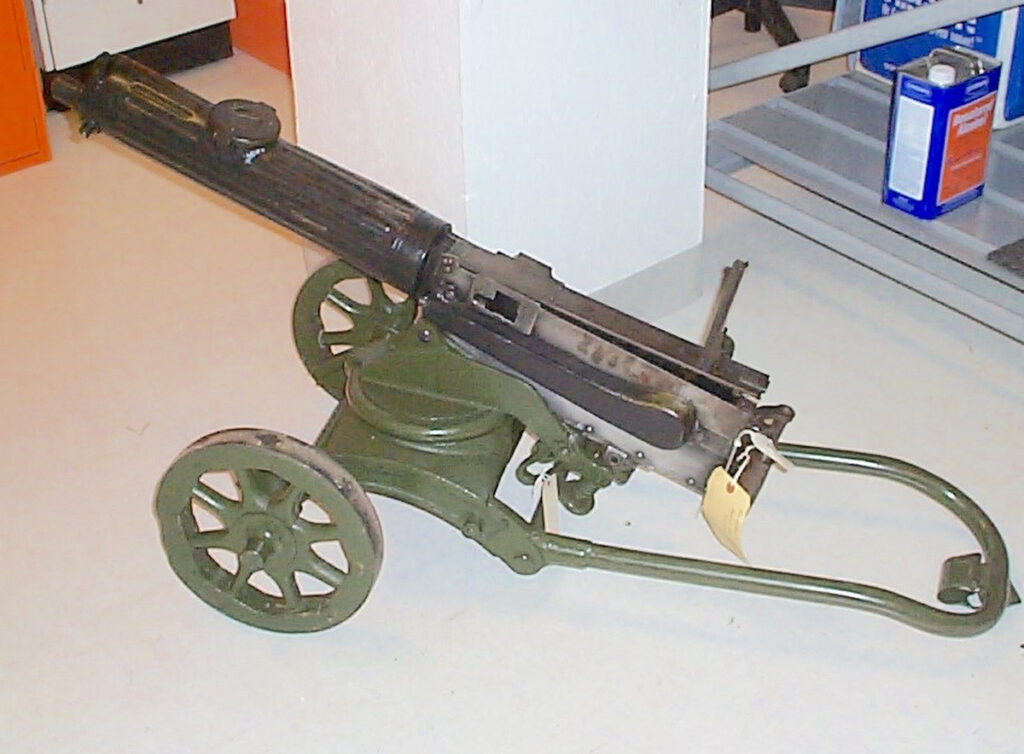
This is a job for a Maxim. Its toggle action spreads out the shock of operation so there is less wear and breakage of parts. When it does wear out, the bearing surfaces on the receiver are riveted on and can simply be changed for new ones while the modular parts are sent back to the ordnance depot for rebuilding. Being recoil operated, it does not have a gas system to foul and jam as the number of rounds fired adds up. The Germans were well aware of this issue with gas operated guns and stated that the gas operated systems had inherent problems. They kept designing recoil operated guns as a result.
TACTICAL USE OF THE MAXIM IN 2024
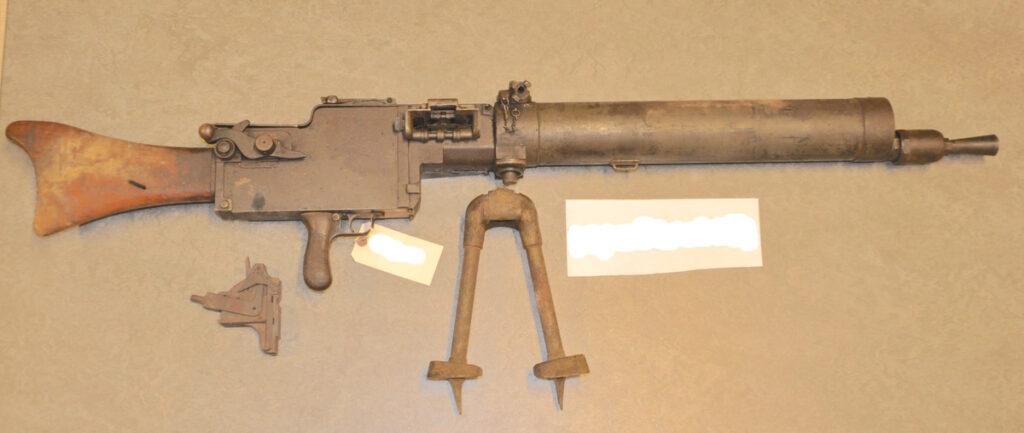
To get the best use of the Maxim today, you would want the WWI German 08-15 version with the optional Lafitte 34 mount. No one today seems to remember that the 08-15 with its shoulder stock and bipod was just intended as a more mobile heavy machine gun that storm troopers could emplace as they infiltrated the enemy lines and then dominate that sector with sustained machine gun fire. The mobility of the 08-15 eliminated the weakness of the emplaced heavy machine gun under artillery fire as the 08-15 machine gunner could move about like a rifleman, changing firing positions. Even though the weight was 50 pounds with a full water jacket and a 100-round belt in a drum magazine, the weight was so well distributed that many men could fire it from the shoulder like a rifle. This was something almost no one could do with the barrel-heavy Lewis gun, which was a true light machine gun and weighed considerably less. The ability to use a heavy, sustained-fire, water-cooled machine gun in the light machine gun role was a testament to the Maxim’s versatility.
For accurate fire in the heavy machine gun role, many of the remaining 08-15 Maxims were mounted in the Lafette 34 mount in the 1930’s. This ultimate machine gun mount features recoil absorption, telescopic sight, automatic traverse (if desired), and enabled accurate fire out to 3500 meters converting any machine gun mounted in it to a miniature artillery piece. We see these today with MG34’s and MG42’s primarily mounted on them, but they cannot deliver the sustained fire of a water-cooled gun in the Lafette 34.
HISTORICAL PRECEDENCE
The abandonment of the sustained fire machine gun and its replacement with air cooled guns had disastrous consequences. The air-cooled machine gun is a wonderful weapon in its place, but it can never do the job of a sustained fire machine gun. In WWII, the Germans found that the Russian human wave assaults kept coming until the air-cooled guns overheated allowing the Russians to overrun them. The Normandy invasion was admittedly a close-run affair and water-cooled Maxims fully deployed for both direct and indirect fire would have been more than enough to dip the balance in the German defender’s favor.
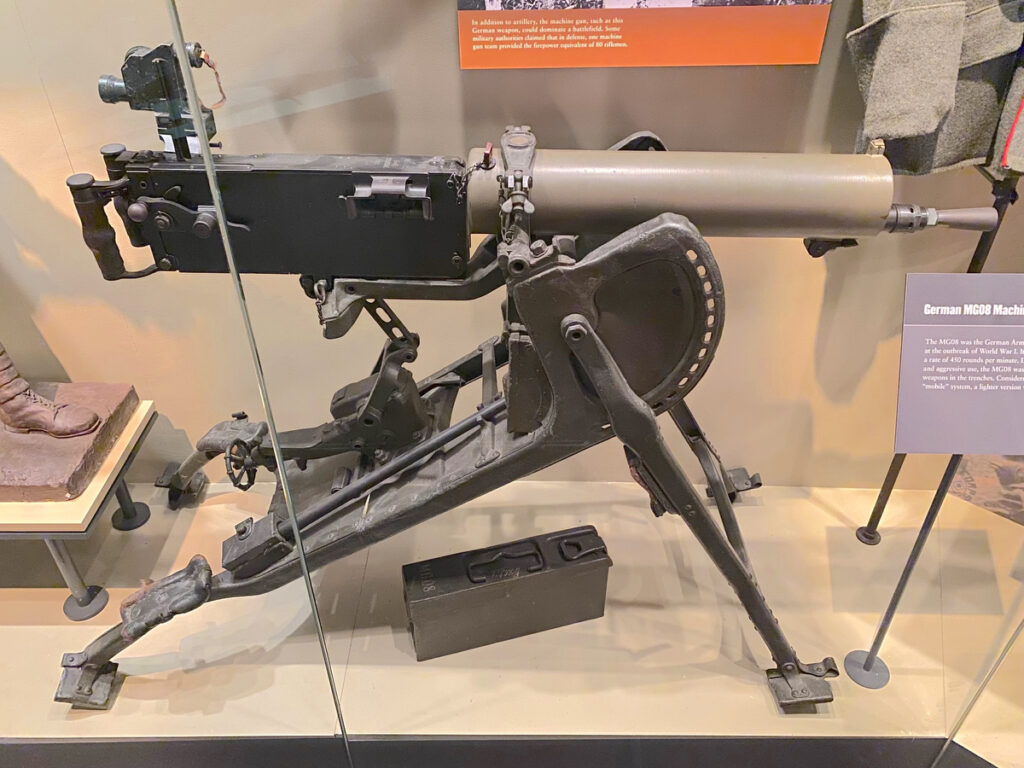
During WWII, in Burma, the British managed to sucker the Japanese into Banzai charges against WWI-style barbed wire backed by their Vickers machine guns (a Maxim variation) resulting in the annihilation of the attacking Japanese troops.
No machine gun is as reliable or able to fire as long as a Maxim. When John Basilone got his medal of honor defending Henderson Airfield at Guadalcanal with the two machine gun sections he commanded, his commendation stated, “he went from machine gun to machine gun repairing them and keeping them firing.” They weren’t supposed to need repairing! If they had Maxim guns, there would not have been any stopping for repairs. And if there was a problem, the gunner could have swapped out the modular part in a few seconds and kept firing without needing his commander’s help. It seems clear that water-cooled guns would have been a powerful help against Japanese Banzai attacks throughout the war as they could keep on coming long after an air-cooled gun overheated.
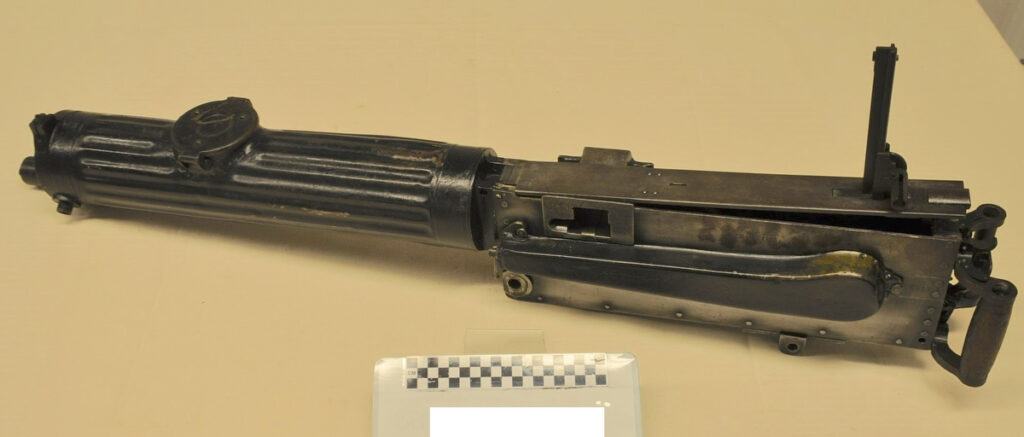
In the Korean War, the Chicom human wave assaults pushed back the American troops just as the Russian human wave assaults had done against the Germans in the preceding war. Water-cooled guns properly employed for direct and indirect fire would have foiled these assaults, but they were scarce, and the U.S. military has never wanted to invest the training time and equipment needed for effective indirect machine gun fire.
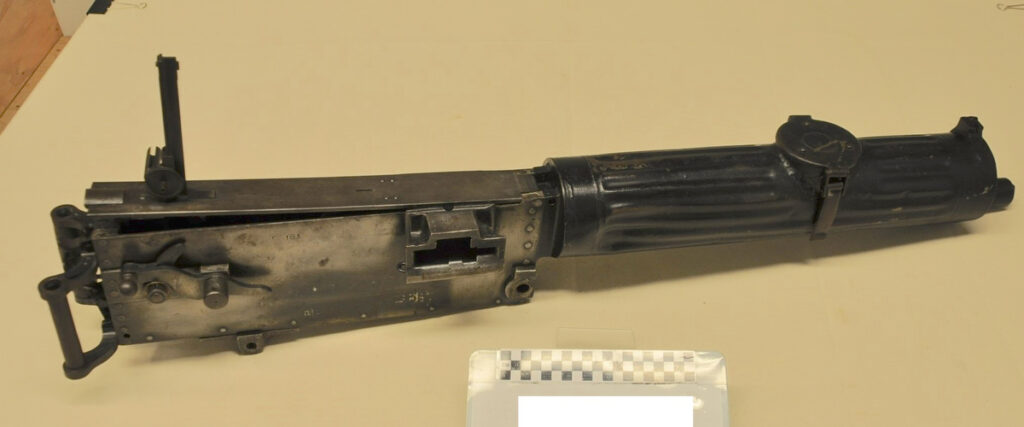
During the Vietnam War, American fire bases were overrun largely because of inadequate machine guns of modern design and the improper use of them. No one wants to learn the lessons of history if it involves using old ways. Newer is always supposed to be better and anything from the past tends to be dismissed out of hand if not ridiculed as anachronistic and obsolete. What could be more obsolete than the world’s first machine gun? A weapon designed back in 1884! The problem with that line of reasoning is that the inventor got it right and the design was perfected. Once you get to the top of the mountain of machine gun design, all roads go downhill… and the Maxim is the pinnacle. No gun made since has come near its longevity and reliability.
MORE THAN GUNS
Maxim was one of the great geniuses of all time. He patented the electric light bulb and Edison was only able to steal the design when Maxim went out of town and told his plant director to renew the patents… which he failed to do. The patents lapsed and Edison was able to grab the invention and run with it.
Maxim also flew the first airplane in front of England’s elite and the English press. When investors were not forthcoming, he wisely dropped the project. The airplane industry didn’t take off until many years later in WWI. When the Wright brothers wanted to build an airplane, they went to Maxim, and he gave them his notes, enabling them to build an airplane, as well.
When you look up and see an automatic fire sprinkler system in a building you are looking at another of Maxim’s inventions that has remained unchanged, defying improvement.
When you look more closely at the man behind the Maxim machine gun you realize why it has also defied improvement and still reigns supreme as the all-time greatest in its field.
